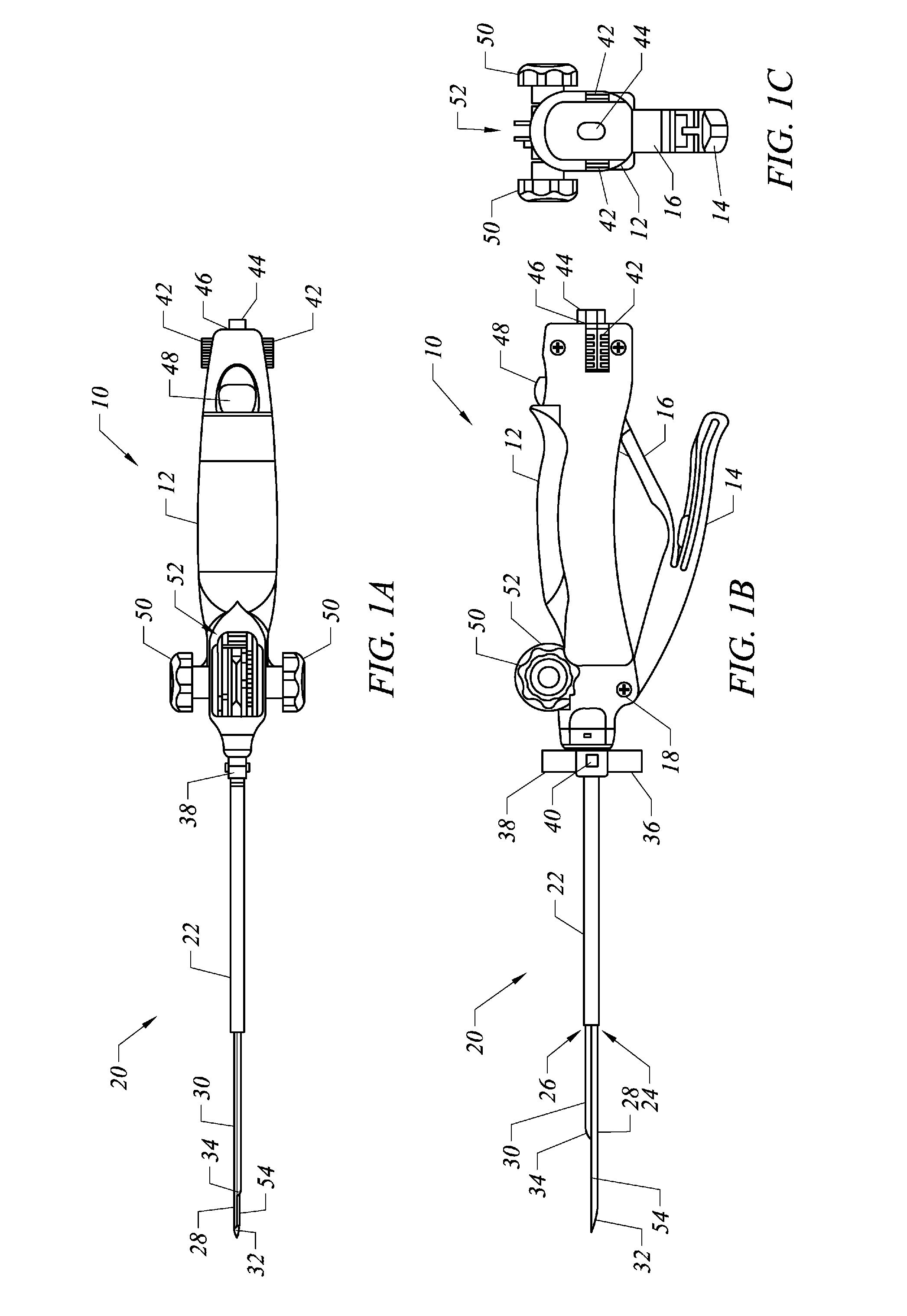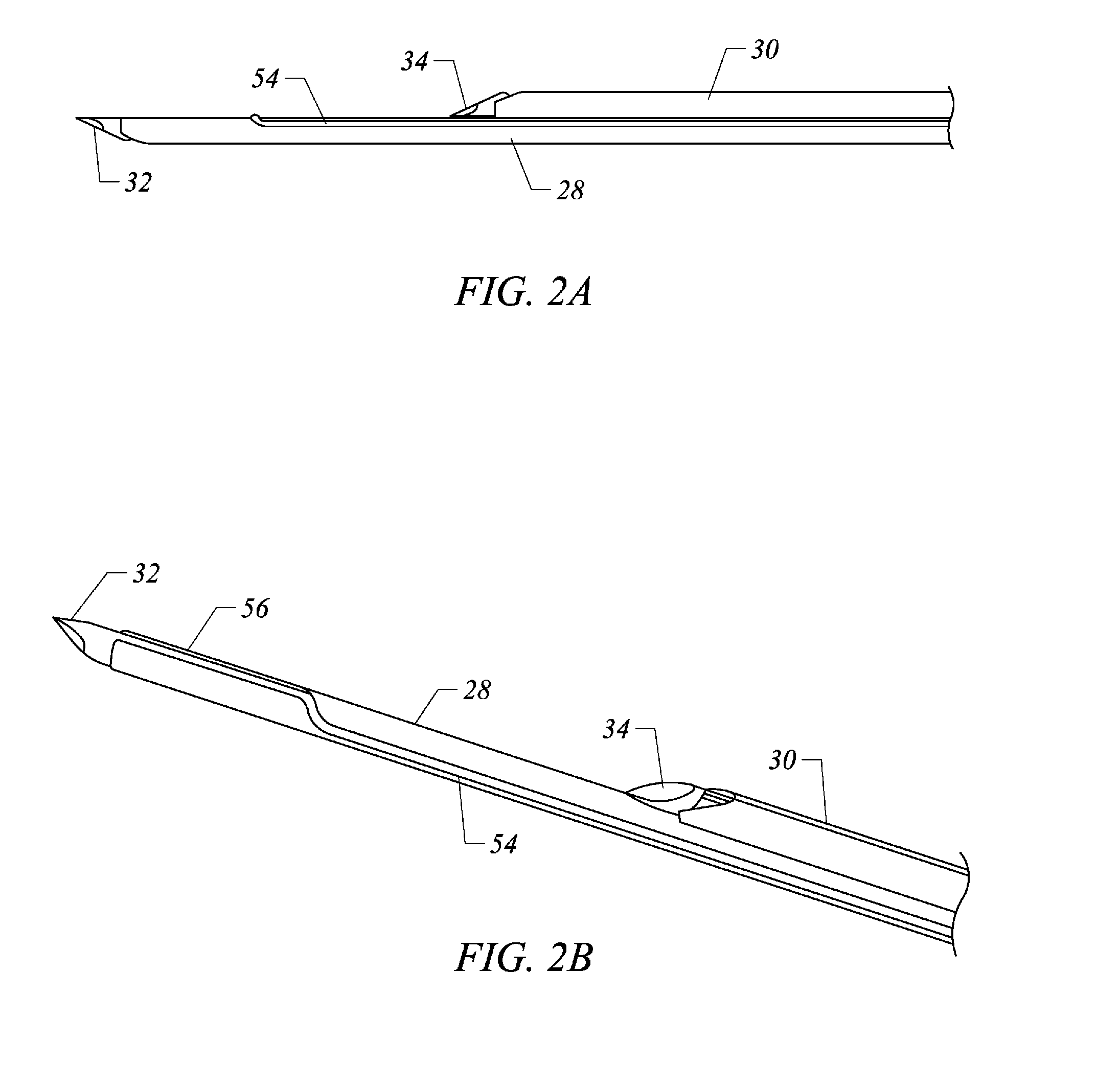Implant and delivery system for soft tissue repair
a soft tissue and implant technology, applied in the field of implants, can solve the problems of affecting the repair effect of the tendon, affecting the repair effect, and the size of the hole, so as to facilitate the repair of the trans-tendon soft tissue, and the damage to the tendon is minimal
- Summary
- Abstract
- Description
- Claims
- Application Information
AI Technical Summary
Benefits of technology
Problems solved by technology
Method used
Image
Examples
Embodiment Construction
[0047]In repairing soft tissue by anchoring the soft tissue (such as a tendon of a torn rotator cuff) to a region of bone, the anchor inserter assembly may generally allow the user to insert at least two anchors into bone independently of one another, lock each anchor into the bone, allow the user to subsequently tension a length of suture or wire between the anchors to affix the soft tissue, immobilize the suture or wire, and then disassociate the inserter assembly from the anchors, leaving them and the affixed soft tissue behind in the bone. In particular, such an anchor inserter assembly may preferably eliminate the need to separately pass suture or wire, eliminate the need to tie knots, allow the procedure to be performed without the need to move an arthroscope from an articular side to a bursal side of the cuff, and by virtue of the small diameter of the anchor implants, reduce the size of the hole placed in the cuff when passing the implant through.
[0048]Generally, the anchor ...
PUM
 Login to View More
Login to View More Abstract
Description
Claims
Application Information
 Login to View More
Login to View More - R&D
- Intellectual Property
- Life Sciences
- Materials
- Tech Scout
- Unparalleled Data Quality
- Higher Quality Content
- 60% Fewer Hallucinations
Browse by: Latest US Patents, China's latest patents, Technical Efficacy Thesaurus, Application Domain, Technology Topic, Popular Technical Reports.
© 2025 PatSnap. All rights reserved.Legal|Privacy policy|Modern Slavery Act Transparency Statement|Sitemap|About US| Contact US: help@patsnap.com



